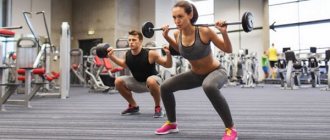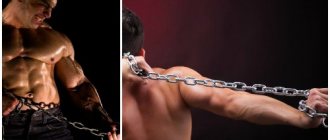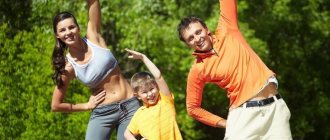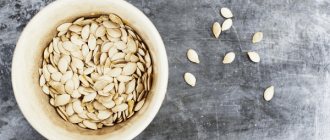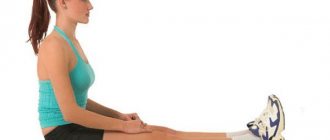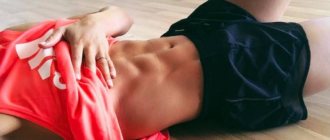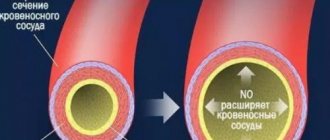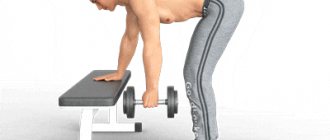Share:
What you need
- Dumbbells
- Barbell
- Horizontal bar
- Exercise equipment
- Fitball
We often hear from various fitness bloggers that without doing basic exercises there can be no growth. What confirms their effectiveness? In this article we will try to answer this question, and also figure out how to do basic basic exercises and how to implement them into your training process.
The best basic exercises for different muscles
There are both basic and isolation exercises for each muscle group. It is especially important to perform basic exercises for beginner athletes. This way, you will quickly build a certain strength base, from which it will later be easier for you to build muscle, improve the functionality of your body, or increase record weights in strength movements. But it is not recommended for experienced athletes to abandon the base; in any case, it should make up the majority of your program.
It is worth noting that not all athletes will benefit from regular exercise. Many of them (such as deadlifts and squats) involve a strong axial load on the spine. It is not recommended to perform them for herniated discs and protrusions, especially in the lumbar region. In addition, performing these exercises with large working weights is quite a traumatic activity, and the slightest deviation from the correct technique can not only aggravate existing health problems, but also cause new ones to arise.
For beginners who train without a trainer, it is also better not to include deadlifts and squats with a barbell in their program, since learning the technique from scratch on your own will be quite difficult. It is better to first develop skills in working with iron using simpler basic exercises, and only then move on to complex ones. Or immediately start working with a trainer.
Below we provide a list of basic exercises for each muscle group. They are suitable for both men and women, the most important thing about them is the correct technique.
Basic leg exercises
Let's first talk about basic leg exercises. After all, many ignore this muscle group, but in vain.
Squats
Barbell squats are one of the fundamental exercises in many sports. In this movement, almost all muscle groups of your body work in one way or another. The main dynamic load falls on the quadriceps, hamstrings, spinal extensors, gluteal muscles and hip adductors. When working with serious weight, a significant static load falls on the abdominal muscles, shoulders and trapezius muscles.
The main thing in this exercise is to monitor your breathing (exhale strictly when lifting) and keep your back straight throughout the entire movement - this way you will protect yourself from injury.
© Vitaly Sova — stock.adobe.com
A clear position of the head helps stabilize the movement - the gaze should be directed strictly in front of you or slightly upward, this will make it psychologically easier for you to get up from a lower position.
Don't forget about the position of your feet - in general, they should be spaced slightly wider than your shoulders, with your toes pointing to the sides. When rising from a squat, never bring your knees together.
This also includes squats in Smith and hack machine. These movements are a little simpler in terms of technique. The general principle is the same, but the position of the body and the projectile is more fixed, which is why fewer stabilizer muscles are involved in the work.
© mountaira — stock.adobe.com
Leg press
The platform leg press cannot fully replace heavy squats with a barbell, but the load on the legs is no less: the front, back and inner thighs and gluteal muscles work. Perfect for beginners for whom the squat technique will be too difficult at the initial stage.
The most important thing in this exercise is not to overdo it with the working weight. This will make it more difficult for you to control the correct position of your knees. If you bring them inside the trajectory of movement, you risk injury to the ligaments.
It is also important to work in a comfortable amplitude. Do not try to lower the platform as low as possible. The geometry of most exercise machines is designed in such a way that at the lowest point your spine will be rounded in the tailbone area. This is an extremely traumatic position. At the top point, you don’t need to straighten your knees all the way, leave them slightly bent.
Lunges
You can perform lunges with your own weight, with a barbell or dumbbells. In any variation, you will use all areas of the leg muscles. Depending on the width of the step, the direction of movement and the position of the foot, you can slightly emphasize the load on one or another area: with a shorter step, the emphasis falls on the quadriceps, with a wide one, on the hamstrings.
If you perform a step in such a way that at the bottom point the angle between the shin and the thigh of both legs is 90 degrees, the load is equally distributed on the front and back surfaces of the thigh.
Sumo deadlift
This is a variation of the classic deadlift, in which the emphasis shifts to the legs (adductors, quadriceps and hamstrings) and works the back to a lesser extent. This is achieved through wider stance of the legs. The range of motion in a sumo stance is a little shorter, but this does not eliminate the powerful static tension in the abdominal muscles, back, trapezius and arms.
The correct technique for performing a sumo deadlift involves a deep squat in the starting position and maintaining a straight back throughout the entire exercise. This way you minimize the risk of back injury or umbilical hernia.
Athletes who are not involved in powerlifting should avoid using an underhand grip, as it can also lead to spinal injury. Use a regular overhand grip; you can attach straps if the weight is too heavy.
Romanian deadlift
It is often mistakenly called a deadlift, although in fact a deadlift is a regular classic deadlift. In the Romanian version, the legs remain slightly bent throughout the entire approach; the work is mainly carried out by the extensors of the spine and biceps of the thigh. That is why this exercise can be considered a basic one for the back. It’s also a good idea to include the gluteal and other additional stabilizers (trapezius, calf, etc.).
There is no need to perform this movement with fully straightened legs, as this can cause injury. The angle of the knees should not change throughout the entire approach. The bend should be done to a comfortable point, stretching is different for everyone, and should not be done through pain. It is also important not to hunch your back; if you can’t do this, reduce the working weight.
Another version of this exercise is with dumbbells, the technique here is identical, but the emphasis shifts more to the gluteal muscles.
Basic exercises for beginners and pros
Basic exercises for gaining muscle mass can have several variations - you decide for yourself the most effective method. We recommend using them not only for men, but also for women.
Bench press
Used to develop the pectoral and deltoid muscles, triceps. The exercise is performed lying on a special bench using a barbell. Amateurs and professionals can weight it with pancakes depending on their training. You can change the incline of the bench to target different areas of the chest muscle, or alternatively use dumbbells to perform presses or flyes.
Deadlift
Allows you to work the muscles of the back, chest and arms, as well as the quadriceps and biceps muscles of the thighs and buttocks. It is usually performed with a barbell or its bar; beginners can use dumbbells or kettlebells. The exercise has several varieties:
- The classic version is performed with a narrow stance of the legs (narrower than shoulder width) and a bend in the knees;
- The Romanian or deadlift is performed with straight legs;
- The Sumo deadlift is similar to the classic one, but with a wide stance.
Depending on the weight of the equipment, you need to monitor your grip on the barbell to avoid hand injuries.
Squats
The most popular exercise for women, as it allows you to work your calf muscles, thighs and buttocks. Performed in a simulator with different positions of the legs. These can be classic squats or lunges - it all depends on what result is required.
Remember that to progress, you need to periodically change your technique, supplement basic exercises with isolated ones, and don’t forget about rest days and proper nutrition!
Basic exercises for the back
Now let's talk about how to achieve a powerful muscle corset and rock your back.
Pull-ups on the horizontal bar
The crossbar is a wonderful exercise machine with which you can work the entire muscle mass of the upper back. If you do a wide-grip pull-up, the work involves the latissimus dorsi, trapezius and rhomboids, the posterior deltoid muscles, as well as the teres major and minor muscles.
If you use a narrower grip, the arm muscles will be strongly involved in the work: biceps, brachialis and forearms. To partially reduce the load on your arms, use wrist straps. If you want to stress your back muscles even more, do a slight arch in the thoracic spine and squeeze your shoulder blades together at the top of the amplitude.
Pull-ups (as well as pull-downs on a vertical block) are recommended to be performed only by people with a flexible shoulder girdle. In general, it is better to perform this movement towards the chest to avoid injury to the shoulder joints.
This group of exercises includes all vertical rows on a block, as well as pull-ups on a gravitron - this is a special exercise machine with a counterweight that facilitates movement. Pulldowns use the same muscles, but are slightly less effective. They are well suited for beginners who do not have enough strength to pull themselves up, as well as for those who do not know how to “turn on” their back and pull themselves up using their arm muscles.
© Makatserchyk — stock.adobe.com
Bent-over barbell or dumbbell row
Horizontal rows thicken your back, which is important for building a massive torso. Bent-over barbell rows target the entire upper back, rear deltoids, and biceps. Also, a strong static load is placed on the spinal extensors and abdominal muscles.
Experienced athletes can focus the load on one or another area of the latissimus muscles. If you want to put more stress on your lower lats, use a reverse grip and pull the bar straight toward your waist. If your goal is a strong upper lat, rhomboid, and trapezius, work with an overhand grip and lift the barbell toward the bottom of your ribcage.
The tilt is also important; many athletes lean forward only a little, which reduces the range of motion and places emphasis on the trapezius. It is optimal to bend to an angle of approximately 30 degrees relative to the floor.
© Makatserchyk — stock.adobe.com
Bent-over dumbbell rows help pump up your back just as well. This is a one-way movement, so the stabilizer muscles will work even more here: the spinal extensors, abs and deltoids. It is recommended to perform both of these exercises with moderate weight and not to use cheating (swinging the body). It is much more important to engage the back muscles as much as possible, bringing the shoulder blades together at the top point, than to try to throw a barbell or dumbbell up in every possible way.
This also includes rowing a barbell to the waist while lying on an inclined bench. This exercise is good because the static position of the body eliminates cheating and also reduces the load on the lower back. The working weight is taken less than with a regular standing deadlift.
© Makatserchyk — stock.adobe.com
Another variation is traction on a horizontal block. It also targets the thickness of the back and uses the same muscle groups. If you take a wide handle instead of a narrow one and take it wider than your shoulders, you can shift the emphasis to the rear deltoid.
© tankist276 — stock.adobe.com
T-bar row
Almost every modern gym has a special machine for working out the back muscles - the T-bar. They come in two types: with and without chest support. A variation of the T-bar row with a chest support allows you to almost completely imitate the performance of a bent-over barbell row while lying on an incline bench.
Another plus of this machine is that there are more grip variations. For example, a narrow parallel grip allows you to perfectly work the middle of the back; you cannot imitate such a movement by working only with a barbell or dumbbells.
If your gym doesn’t have such a machine, it doesn’t matter. You can imitate the T-bar row using a regular Olympic barbell and a handle with a narrow parallel grip from a block back machine. In any case, this exercise is worth doing on a regular basis - your back will quickly become more lumpy and massive.
Classic deadlift
Deadlifts with classic leg positioning involve shifting the load to the back muscles. However, the legs are also involved quite strongly, and although this movement is traditionally classified as a back exercise, it can also be considered basic for the legs.
The classic stance involves placing your feet shoulder-width apart, your hands holding the barbell a little wider, and doing a slight squat and leaning forward. Keep the barbell as close to your shin as possible, then the trajectory of movement will be strictly vertical. The legs work here only at the moment the bar lifts off the floor; mainly the buttocks and quadriceps work. But you go through the upper 2/3 of the amplitude due to the work of the spinal extensors. A strong static load falls on all the muscles of the upper back, trapezius and biceps.
It is fundamentally important to keep your back straight throughout the entire approach.
Performing hump deadlifts is one of the most common mistakes among beginner athletes, but under no circumstances should you lift serious weight this way, it can put an end to your sports career.
It is very important to breathe properly while performing deadlifts. Exhaling too late will increase intracranial pressure, which can make you feel dizzy and may force you to stop your workout.
If you want to increase your strength and work on the upper phase of the movement, perform deadlifts from plinths (stands). This will reduce the load on your legs to almost zero, and you will be able to pump your back even more.
An effective training program for beginners
The effectiveness of the program depends on the goals set: for example, to lose weight, you need to spend more time on cardio, but for gaining weight, strength training is better suited. There is no universal program and you should select the appropriate exercises based on your personal feelings together with a trainer. As a basis, you can use basic exercises in the gym, their description is below.
The vast majority of girls go in for sports to lose weight, strengthen, and tighten their figure. In this regard, exercises for women in the gym are somewhat different from men's; the emphasis is more on aerobic exercise. A girl's body contains 10% more fat; it is needed to fulfill their natural task - giving birth to a child. Therefore, you should start any workout with a jog (at least 20 minutes), after which you can begin the rest of the basic exercises in the gym.
The best exercises for the back
Basic back exercises are used to increase muscle size and are therefore better suited for men to achieve a V-shape. The movements must be performed correctly, following the technique, so as not to injure the body. Basic exercises in the gym should be the first until the athlete has enough strength to work with weights. To train your back you should do:
- Deadlift is one of the three main basic exercises. Good load on the lower back, shoulder girdle, hips, buttocks, and biceps. One of the most exhausting, but also useful exercises. It is very important to follow the technique when performing so as not to damage the lower back, which receives serious stress.
- Bent-over barbell row. A good way to pump the latissimus muscles, performed after deadlifting, helps to make your back visually wider. The muscles of the shoulder girdle and biceps are also involved.
- Pull-ups are a well-known back exercise that can be done at home or on the outdoor sports ground.
Pectoral muscle training
A pumped chest is not an easy task for any athlete. Many people have to spend more than one week to get a feel for the training technique and grasp the required amplitude. Basic best exercises in the gym for chest:
- The bench press is also included in the main three bases. Allows you to use maximum weight to load the chest muscles, engages the shoulder girdle and forearm. Don’t rush to lift heavy weights; ask someone in the gym to back you up during the exercise so that you don’t get pinned by the bar.
- Dumbbell bench press. This option allows for less weight, but provides a greater range of motion, which has a beneficial effect on muscle growth.
- Push ups. A home version of the basic exercise for the thoracic region, it involves the shoulder girdle, biceps, and triceps muscles.
- Chicken satsivi - step-by-step recipes with photos. How to cook chicken in nut sauce in Georgian style
- Pickled garlic for the winter - recipes with photos. How to pickle garlic at home using cloves and heads
- How to lose belly fat with a hula hoop
Basic biceps exercises
The most effective movement to pump up the biceps muscle is bending at the elbow, but it involves one joint, so such exercises are considered basic with a big stretch. Rather, they can be called the most effective. Basic biceps exercises in the gym:
- Pull-ups (reverse grip). The only option that really involves more than 1 joint, but it won’t work for a long time with its help, the athlete gets tired quickly.
- The biceps curl involves one joint, but has the maximum effect in a biceps training course. In addition to the biceps muscle, the anterior bundle of deltas is involved.
- Exercise "Hammer". Often athletes have lag in the lower part of the biceps; this version of the exercise provides an opportunity to work out the necessary part of the arm well.
For triceps
With this muscle group the situation is simpler than with the biceps. You should not avoid training the triceps muscle; it forms up to 60% of the visual volume of your arm. If the main movement for the biceps is flexion, then in this case it is extension. Basic triceps exercises in the gym:
- Bench press with a narrow grip. This option provides the opportunity to maximally load the muscle and take on a large working weight. With a narrow grip, the pectoral muscle is excluded from the work, and the entire emphasis is shifted to the triceps. As with chest training, it is advisable to have someone back you up.
- French press. It is better to perform it with a light weight, this will prevent overloading the elbow joint, but with a large number of repetitions. The sequence is the same with the chest: do the chest press first, then the French press. With this approach, your joints will not be in any danger.
On the shoulders (delts)
Wide, massive shoulders adorn any man. The joints here are very easy to injure, so the movements should be performed extremely carefully, choosing the right weight. Basic shoulder exercises:
- Army press. It is performed standing or sitting with a barbell, which, unlike dumbbells, provides the opportunity to load the target muscles more. Along with the shoulders, the triceps and muscles of the middle back are trained to a lesser extent.
- Dumbbell press. It is better to perform it while standing; this option is an alternative to the military press, but they can also be performed in one workout.
On the abdominal muscles
Like the biceps, there is no base for this body part; all movement options involve one joint. The main principle of pumping the abdominal muscles is twisting. Abdominal exercises in the gym are performed to maximize tension on muscle fibers during their contraction. For training you can do:
- Bench crunches are good for the upper abs. Its lower part is also involved, but less.
- Hanging leg raises effectively train the lower abdominal muscles. Abdominal training should be performed at the end of the session, in each approach the maximum number of times.
On the leg muscles
This part of the body becomes a problem for men and women. For the former, it becomes a real challenge to increase muscle mass, for the latter – to lose excess weight and deal with cellulite. Women need to work with lighter weights, doing more repetitions to speed up their metabolism and increase endurance. Leg exercises in the gym:
- Lunges with dumbbells. Several options for execution techniques are used, but the maximum effect is obtained if they are done with advancement. You need to squat deeply and rise onto your toes. The muscles used are the same as when doing squats.
- The barbell squat is the last of the three basic exercises. Beginners are strictly not recommended to perform with heavy weight. It’s better for girls to start with just a barbell, for guys – with 5 kg weights. This is due to the heavy load on the lower back. The quadriceps, gluteal muscles, hamstrings, and lower back are perfectly worked out.
Basic chest exercises
Bench press
The bench press is probably the most common exercise in all gyms. This exercise cannot be called isolated; the triceps and shoulders work here no less than the pectoral muscles. The static load falls on the spinal extensors, latissimus and trapezius muscles of the back, biceps and abdominal muscles.
Many athletes squeeze their shoulder blades together as much as possible, arch their lower back, bridge and use a wide grip - this shortens the range of motion and further reduces the load on the chest muscles. This makes no sense unless you are into powerlifting. It would be optimal to bring your shoulder blades together and make a slight natural deflection. In this case, the legs rest on the entire foot, and not on the toes.
You can perform the barbell press on an incline bench or lying upside down. This focuses the load on the top or bottom of the chest, respectively, but the load on the triceps and front deltoids will not disappear. If the positive angle is too large (more than 45 degrees), the emphasis shifts from the upper chest to the deltoids. The optimal angle is 30 degrees.
© Makatserchyk — stock.adobe.com
Smith bench presses can also be included in this category. The trajectory of movement here is set by the simulator itself, so fewer stabilizer muscles are activated.
© Odua Images - stock.adobe.com
Dumbbell Bench Press
A similar exercise to the barbell bench press. There are also three main variations - bench press on a horizontal bench, inclined and upside down.
Due to the fact that a separate projectile is held in each hand, more small stabilizer muscles are connected. You can also increase the amplitude by lowering the dumbbells a little lower; you won’t be able to do this with a barbell.
When creating a training program, a great option would be to combine barbell and dumbbell presses at different angles, for example, first perform a barbell press on a regular bench, and then do dumbbells on an incline.
© Makatserchyk — stock.adobe.com
Dips
Dips are an equally effective exercise for working the lower chest, but they also work the triceps and anterior deltoids just as much. The correct position of the body and elbows will help you focus on working one or another muscle group. If you spread your elbows to the sides and bend forward slightly, your pectoral muscles will work harder. If you keep your back straight and move your elbows along your body - triceps. It is also recommended to use slightly narrower bars to emphasize the triceps. In this variation, this exercise will be basic for the arms.
If necessary, use additional weights in the form of a disk or dumbbell suspended from your belt.
Pushups
The simplest chest exercise that you can do even at home. However, it is basic, because in addition to the chest, it also uses the triceps and the anterior delta.
In push-ups, you can also focus on a specific muscle group. In the case of the chest, the position of the arms should be wider than the shoulders, with the elbows spread to the side.
For greater amplitude, use supports under your arms; you can perform the movement on dumbbells or kettlebells.
© kucherav — stock.adobe.com
To shift the load to the upper chest, the legs should stand at some elevation.
If you want to place more emphasis on the triceps, then place your arms narrower than your shoulders, almost close, with your palms facing each other. When lowering, your elbows should be guided along the body. In this version, this exercise can be classified as a triceps exercise.
© Roman Stetsyk — stock.adobe.com
Here you can also use additional weights, such as a heavy backpack.
Training plans
Let's look at two options that you can rely on when building your own workout.
Men's program "for mass"
The plan is designed for athletes who have 3-4 months of strength training experience and have mastered the techniques of basic elements.
Lesson 1. Target - chest muscles, biceps:
- Warm up: any cardio machine - 7-10 minutes.
- Bench press (horizontal bench) - 4x8.
- Dumbbell flyes - 3x12.
- Incline dumbbell press – 3x12.
- Dips - 3x15.
- Reduction of arms in a butterfly simulator - 3x12.
- Barbell curl for biceps - 3x12.
- Roman chair crunches – 3x25.
Lesson 2. Target - back muscles, triceps:
- Warm up: any cardio machine - 7-10 minutes.
- Deadlift - 4x8.
- Upper block pull behind the head - 3x12.
- Bent-over barbell row – 3x12.
- Bent-over dumbbell row with one arm - 3x12.
- Hyperextensions - 3x12.
- Close grip bench press - 3x12.
- Crunches on the floor - 3x25.
Lesson 3. Target - leg muscles, deltas:
- Warm up: any cardio machine - 7-10 minutes.
- Calf raises in a vertical machine - 3x20.
- Barbell squats - 4x8.
- Lunges with weights - 3x12.
- Leg press in the simulator - 3x12.
- Standing barbell press - 3x12.
- Reverse abductions in the butterfly simulator - 3x12.
- Crossover prayer crunches - 3x20.
Program for girls
Women's basic exercises in the gym do not differ in technique from men's. The only difference is the weight of the equipment and the number of repetitions in the sets.
Lesson 1. Target - chest, arms:
- Warm up: any cardio machine - 10-15 minutes.
- Smith machine bench press - 3x12-15.
- Dumbbell flyes – 3x12–15.
- Crossover biceps curls – 3x12–15.
- French press – 3x12–15.
- Bicycle crunches - 3x20.
Lesson 2. Target - back, shoulders:
- Warm up: any cardio machine - 10-15 minutes.
- Pull-ups (gravitron) - 3 to failure.
- Romanian deadlift – 3x12–15.
- Vertical dumbbell press – 3x12–15.
- Reverse abductions in the butterfly simulator - 3x12–15.
- Plank - 4 sets of 30 seconds.
Lesson 3. Target - legs, buttocks:
- Warm up: any cardio machine - 10-15 minutes.
- Squats in Smith (emphasis on the buttocks) - 3x12-15.
- Cross lunges with dumbbells - 3x12-15.
- Leg extension while sitting in a machine - 3x12–15.
- Leg bending while lying in a machine - 3x12–15.
- Fitball crunches - 3x20.
The program can be used by both beginner and experienced athletes. After 2 months, change the plan. If you need to lose weight, add 2 light runs per week on rest days.
Basic hand exercises
In addition to the above-mentioned variations of push-ups and parallel bars for triceps, let's look at a few more exercises.
Close grip bench press
This is a fundamental movement for triceps growth. Here all three of its bundles work evenly, as well as the inner part of the pectoral muscles and the anterior deltoids. When performing a bench press with a close grip, it is important to extend your arms in the same trajectory. To do this, concentrate on the position of your elbows; they should be pressed to the body all the time.
The triceps is a fairly stubborn muscle. In order for it to grow, you need to do both strength work and simply pump blood into the muscle in a higher repetition mode. That is why, when gaining muscle mass, it is recommended to focus on this movement, supplementing it with 1-2 isolating exercises.
Close-grip pull-ups
The only basic exercise for biceps. All other movements in this group are variations of arm curls with a barbell, dumbbells or on machines. They involve only the elbow joint and only one muscle group, which is why they are classified as isolation.
Close-grip pull-ups also work your back muscles well. To emphasize the load on the biceps, do not use straps, try not to squeeze your shoulder blades and pull up using the strength of your arms.
Basic shoulder exercises
Let's look at the most effective exercises that will help strengthen your shoulders.
Bench press standing or seated
In this movement, you work all three deltoids, triceps, and a little of the upper chest. But in any presses up (even from behind the head), only the front bundle receives the greatest load.
In addition, the standing press is very important for developing control over the entire body, because all other muscle groups play the role of stabilizers to one degree or another.
This movement places a fairly strong axial load on the spine, so it is recommended not to push for record weights and, if necessary, use an athletic belt. If you want to reduce the stress on your lower back, do the seated barbell press instead. But even here the load is not completely eliminated - with a sufficiently heavy barbell, the athlete automatically bends in the lower back.
There are still numerous debates regarding the correct way to lower the barbell: behind your head or in front of you. The beam that works here is the same – the front one. But lowering behind the head is an extremely dangerous movement for the shoulder joints. If you don't have some flexibility in your shoulder girdle, you are more likely to get injured. So you should do this exercise only in the form of chest drops.
This also includes seated presses in Smith. Here the trajectory of movement is set by the design, fewer stabilizer muscles are activated, and cheating is eliminated due to a slight squat.
Dumbbell press sitting or standing
An alternative to the barbell press. There is no particular difference between the exercises, it’s mainly just a matter of individual preferences, for example, it’s easier for someone to feel the work of the deltoids with dumbbells. You can do similar presses with each hand alternately or use weights for this.
© Makatserchyk — stock.adobe.com
A variation of this exercise is the Arnold press - when the dumbbells are turned towards you when lowered. Thanks to this, the rotator cuff muscles are also involved.
Barbell row to the chin
Despite the fact that the target muscle group when performing a barbell row to the chin is the middle delta, this row (or simply a pull-up) should be considered the base. In addition to the middle delta, the biceps, forearms and trapezius muscles also actively work here. With a narrow grip, the emphasis shifts from the middle to the front delts.
Regular stretching will help you create broad shoulders and add bulk to your entire upper body. There is only one thing - do not overdo it with the working weight. 40-50 kg is the weight with which experienced athletes with impressive muscle mass perform chin pulls. If your training experience is still short, do not run ahead of the train, limit yourself to working with an empty bar, this will be much more useful.
If you don’t have a barbell, the movement can be performed with dumbbells.
© ruigsantos — stock.adobe.com
What are basic exercises
Why are basic exercises called “base”? The fact is that basic exercises are like the foundation for a home. You won't start building a house from the roof, will you? So in the gym, the correct approach to creating a training program would be to include basic exercises for all muscle groups. You can purchase such a training program here.
Basic exercises involve large muscles and several joints at once (that's why they are also called multi-joint exercises). That is, your body learns to accept the load not in isolation (on specific muscles), but in concert with other muscles that are auxiliary in this type of exercise. Thus, the body forms a kind of monolith that helps to perform physical exercise. By doing the base, you train the muscle corset, which in an emergency will help your body react to the load coherently and effectively.
Take a piece of paper and a pen in your hands and write down and then remember the following basic exercises for muscle groups:
Legs:
- Barbell Squat
- Deadlift on straight legs
Back:
- Bent-over barbell or dumbbell rows
- Pull-ups on a horizontal bar (horizontal bar)
Deltoid muscles (deltoids)
- Standing overhead or chest presses
- Pulling the barbell to the chin while standing
Breast
- Various bench presses of barbells or dumbbells
Biceps
- Standing biceps curl
Triceps
- Dips
- French press
Let this be your alphabet now. When creating split programs, be sure to include the above exercises, depending on the target muscle group. You, I hope, remember from previous articles that these exercises need to be done first? These exercises involve a massive group of muscles and require enormous concentration when performing, so it is impossible for previously exhausted muscles to prevent you from performing the basics with full dedication.
Basic abdominal exercises
There are hundreds of abdominal exercises. Most of them can technically be classified as basic - since flexion/extension of the spine and hip joints occurs, and several muscle groups are involved in the movement in one way or another. Below we present some of the most popular and effective ones.
Hanging leg raises on the bar
This exercise works great on both the lower and upper rectus abdominis muscles. The lower part of the press receives a slightly greater load.
Usually, during the period of gaining muscle mass, to maintain strength tone in the abdominal muscles, it is enough to perform just one movement, because they already receive enough load from heavy squats, deadlifts and bent-over rows. Therefore, for this purpose, lifting the legs (or knees) while hanging is perfect.
Crunches
There are many variations of this exercise, but they are all aimed at performing the main anatomical function of the abdominal muscles - twisting the body. It is important not to confuse crunches with sit-ups. Here we are not just lifting the body, but rounding the thoracic spine - it is this movement that ensures maximum contraction of the rectus abdominis muscle.
The easiest option is on the floor without weights:
A little more complex - on a fitball:
© Makatserchyk — stock.adobe.com
Even more difficult - with legs raised:
© chika_milan — stock.adobe.com
For athletes with training experience and strong abs, it is better to perform crunches with additional weights:
© fizkes — stock.adobe.com
A set of basic exercises for men
This workout with basic exercises is a classic three-day split (working different muscle groups on specific days of the week). You can use it at any stage of training, but you will get the greatest results from it during the period of mass gain.
| Muscles trained | Exercises | Number of approaches and repetitions |
| Chest + triceps + shoulders | Bench press on a horizontal bench | 4х12,10,8,6 |
| Incline Dumbbell Press | 3x10-12 | |
| Dips with extra weight | 3x10-12 | |
| Close grip bench press | 4x10 | |
| Arnold press | 4x10-12 | |
| Wide grip barbell row | 4x12 | |
| Back + biceps | Deadlift | 4х12,10,8,6 |
| Wide grip pull-ups | 4x10-15 | |
| Bent-over barbell row | 3x10 | |
| Bent-over dumbbell row | 3x10 | |
| Close-grip pull-ups | 4x10-15 | |
| Legs + abs | Squats | 4х12,10,8,6 |
| Leg press | 4x10-12 | |
| Lunges with a barbell, wide steps | 4x10 | |
| Standing calf raises in the machine | 4x15 | |
| Crunches on a fitball | 3x12-15 | |
| Hanging Leg Raise | 3x10-15 |
Basic exercises for back muscles
Pull-ups
One of the main exercises to strengthen the back muscles. To perform, you need a horizontal bar or crossbar, which is easy to make even at home. This is the simplest exercise, but its value lies in the fact that it is basic and allows you to use a large number of different muscle groups.
Deadlift
As a compound movement, the deadlift involves almost every muscle, either to stabilize the position or to lift the weight. This exercise is used to build strength and mass in the muscles of the legs, back, and indeed the whole body.
Bent-over barbell row
By regularly performing this exercise, you can develop the latissimus, teres major muscles, and also influence a number of others, which will allow you to achieve visual and actual thickening of your back. This exercise is used as a complement to various deadlift variations in order to fully work out the back muscles.
Head Pull
This exercise allows you to create an aesthetic V-shaped torso. In this case, the arms should not go back, but move strictly in the plane of the body. The grip should not be wide; it is optimal when the forearm is perpendicular to the bar at the lowest point. The back should bend and the legs should be supported.
